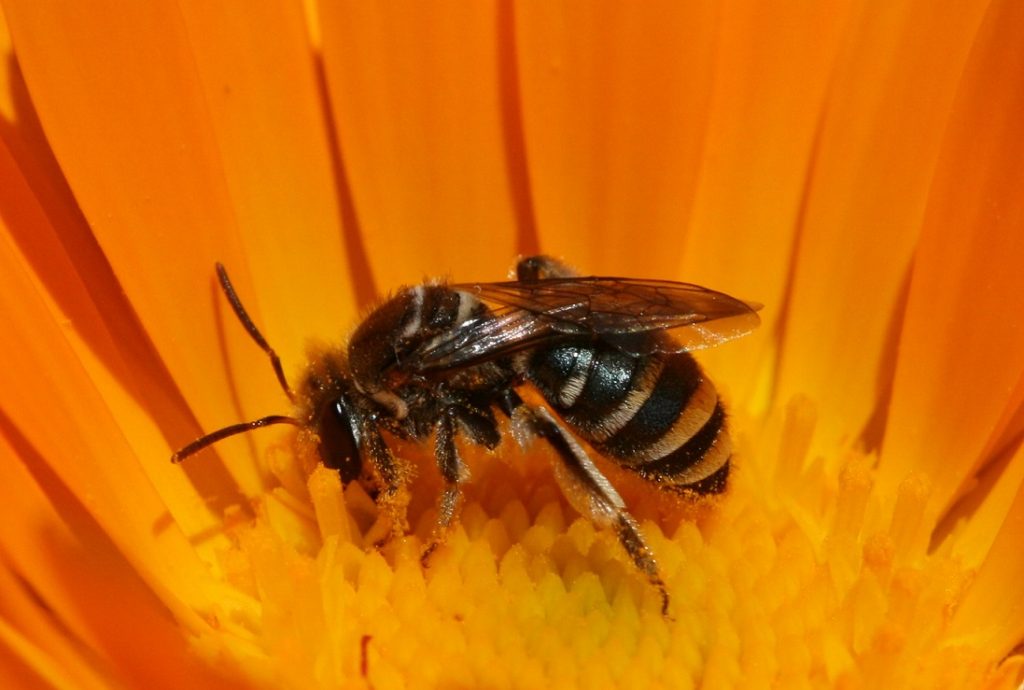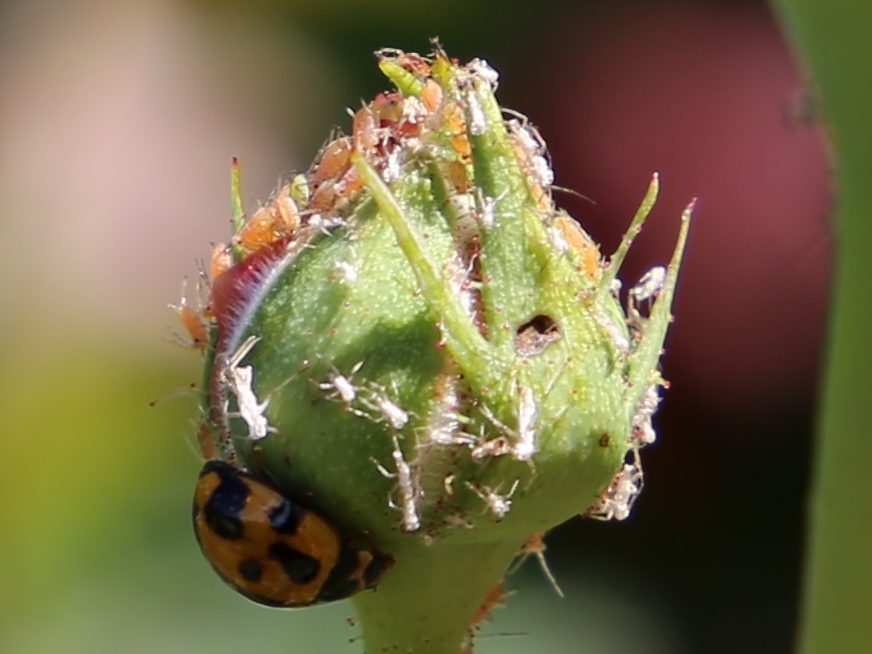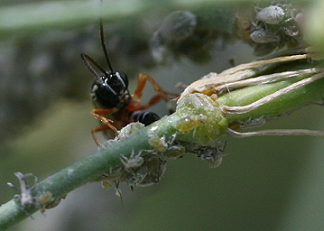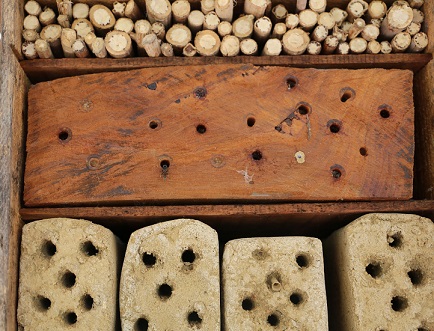We know more about pests than beneficial insects in our garden, because of the damage they cause to plants. This is also why we trained ourselves to spot them. So in our gardens we see mostly the foes:
- sap-suckers: aphids, orange bugs, scale, mites, mealy bugs
- munchers: caterpillars, beetles
- tunnellers: leaf miner, fruit fly larvae
However, only about 1% of insect species in a garden are pests; majority of them are beneficial insects. Please don’t use blanket insecticide applications (even organic ones) which kill all! Your task as a gardener is to build up the population of insects which increase your crops by pollinating and predators which help to keep the pests at bay.
So who are the good guys?
POLLINATORS
Many species of native solitary bees pollinate smaller flowers and also use “buzz pollination” method, preferred by vegetables from the Solanaceae family (tomatoes, capsicums, chillies, eggplant etc). This type of pollination is more effective than mechanical brushing by honey bees!
Other pollinators are flies, lacewings, butterflies, moths and wasps, including tiny native wasps (many of them are parasitoids, laying eggs in bodies of pests, such as aphids and caterpillars) .

PREDATORS:
Insect-eating ladybirds and their larvae, praying mantises, lacewing larvae. Lacewings, like the common Green Lacewing and giant Blue-eyed Lacewing are pollinators, but their larvae are voracious predators. The Green Lacewing larva will eat almost any small insects or insect eggs, particularly the Two-spotted Mite, the Greenhouse Whitefly, scales, mealy bugs and can eat up to 60 aphids in an hour!

PARASITES/PARASITOIDS
Tiny native wasps which lay eggs in bodies of pests, such as aphids and caterpillars,
Hoverflies: Their larvae look like small, pointy green caterpillars, which feed on aphids, scale insects, thrips and can parasitise caterpillars
Tachinid flies (542 known Australian species) parasitise other insects, usually the larvae of moths and butterflies, but also the larvae or adult of beetles, and the adults of bugs and grasshoppers; one species parasitises caterpillars just before they pupate

How to encourage them to stay in your garden?
- Plant flowers for adult insects. The important thing is to always have blooms from early spring till late autumn, so the population of beneficial insects can be well established in your garden. Most beneficial insects feeding on pollen and nectar prefer small, pollen-rich flowers.Tiny flowers of vegetables and herbs from celery, carrot, mint and brassica families are perfect buffet for them.
- Plant a sacrificial plant to host a large population of aphids and caterpillars. Brassicas, especially the tall ones like broccolini, will survive a long time being eaten, they bounce back after watering and fertilising.
- Prepare variety of shelters: pieces of wood and clay with holes in them, bunches of hollow stalks (like bamboo)

